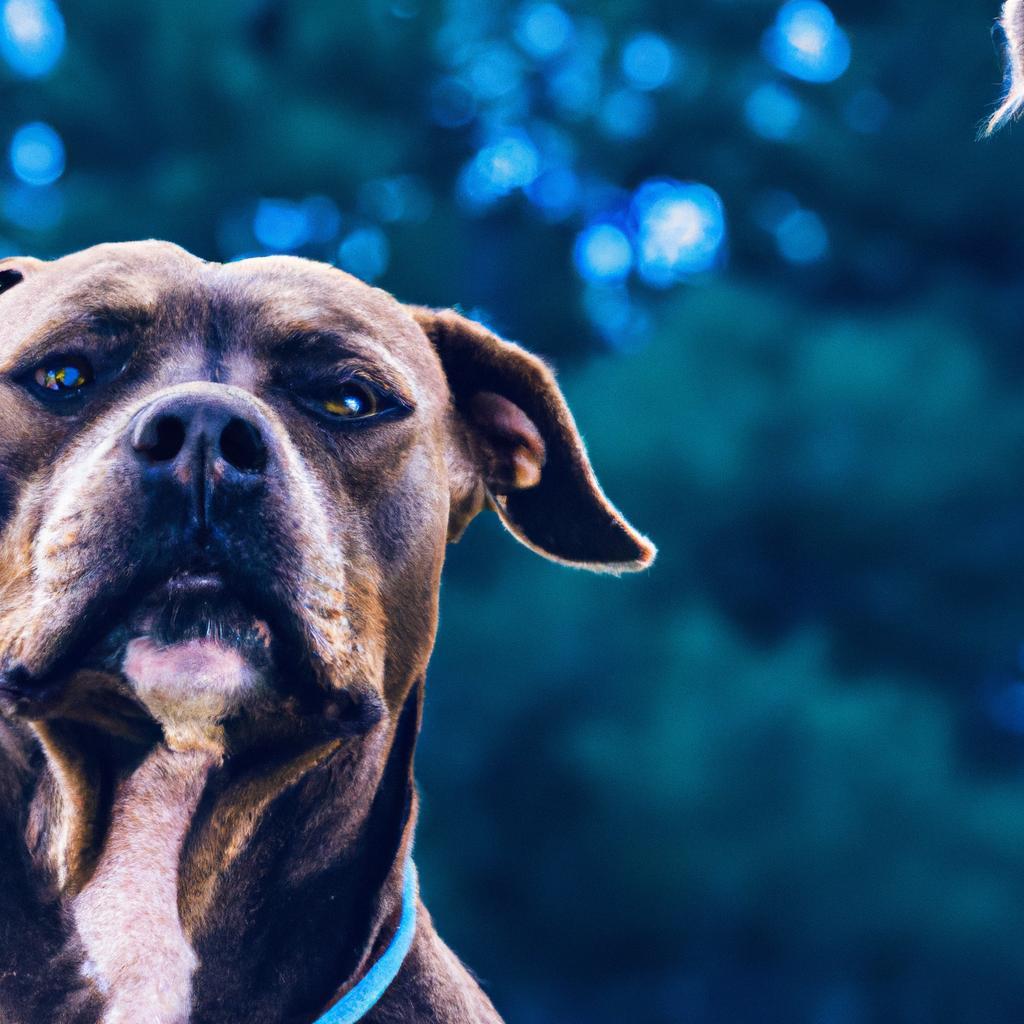In a quiet town, a spirited greyhound named Dash challenged the local horse, Thunder, to a race. The townsfolk gathered, skeptical yet intrigued. As the race began, Thunder galloped with all his might, but Dash, with his sleek frame and unmatched agility, darted ahead. The crowd gasped as the greyhound crossed the finish line first, proving that speed isn’t solely reserved for the majestic horse. This thrilling event highlighted that sometimes, the underdog can surprise us all. So, when it comes to speed, don’t underestimate the power of a dog!
Contents
- Understanding the Speed Dynamics Between Dogs and Horses
- Exploring Breeds That Outpace Horses in Speed
- Training Techniques to Enhance Canine Speed
- The Benefits of Choosing a Fast Dog for Active Lifestyles
- Q&A
Understanding the Speed Dynamics Between Dogs and Horses
When comparing the speed of dogs and horses, it’s essential to consider the unique attributes of each species. Horses, known for their powerful builds and long strides, can reach impressive speeds, often galloping at around 30 miles per hour. However, certain dog breeds have evolved with remarkable agility and speed, allowing them to outpace horses in specific scenarios. This fascinating dynamic showcases the incredible diversity of speed capabilities in the animal kingdom.
Among the canine athletes, the **Greyhound** stands out as a prime example of speed. These dogs are built for racing, with streamlined bodies and long legs that enable them to sprint at speeds of up to **45 miles per hour**. Their exceptional acceleration and endurance make them formidable competitors on the track, often leaving even the fastest horses in their dust during short-distance races. The Greyhound’s ability to maintain high speeds over short bursts highlights the specialized adaptations that canines have developed for speed.
Another breed worth mentioning is the **Saluki**, known for its incredible stamina and speed. This ancient breed can reach speeds of around **42 miles per hour** and is often regarded as one of the fastest dog breeds in the world. Salukis were bred for hunting and have a unique combination of agility and endurance, allowing them to chase down prey over long distances. Their slender, athletic build and keen instincts make them exceptional runners, capable of competing with horses in certain contexts.
It’s important to note that while dogs like the Greyhound and Saluki can achieve remarkable speeds, the context of the race matters significantly. Horses excel in endurance and can maintain a steady pace over longer distances, making them ideal for activities like racing and long-distance travel. However, in short sprints, particularly on a track, these agile dogs can indeed prove to be faster than their equine counterparts. This fascinating interplay of speed dynamics between dogs and horses invites us to appreciate the unique capabilities of each species.
Exploring Breeds That Outpace Horses in Speed
When it comes to speed, most people immediately think of horses galloping across open fields. However, there are several dog breeds that can give these majestic animals a run for their money. These breeds have been specifically developed for speed and agility, showcasing remarkable athleticism that can outpace even the fastest horses in certain situations.
Among the top contenders is the **Greyhound**, renowned for its incredible sprinting ability. With a streamlined body and powerful legs, Greyhounds can reach speeds of up to **45 miles per hour**. Their racing heritage has equipped them with the stamina and acceleration needed to outstrip many equine competitors over short distances. This breed’s speed is not just a product of genetics; it’s also a result of their training and conditioning, making them one of the fastest dog breeds on the planet.
Another impressive breed is the **Saluki**, often referred to as the “Royal Dog of Egypt.” This ancient breed is built for speed, boasting a slender frame and long legs that allow it to reach speeds comparable to that of a horse. Salukis can achieve speeds of around **40 miles per hour**, making them exceptional hunters and sprinters. Their endurance and agility enable them to maintain high speeds over longer distances, further solidifying their reputation as one of the fastest dog breeds.
Lastly, the **Whippet** deserves a mention for its remarkable speed and agility. Often mistaken for a smaller Greyhound, Whippets can reach speeds of up to **35 miles per hour**. Their lightweight build and powerful muscles allow them to accelerate quickly, making them formidable competitors in dog racing. Whippets are not only fast but also incredibly versatile, excelling in various canine sports that require speed and precision.
Training Techniques to Enhance Canine Speed
To unlock your dog’s full potential and enhance their speed, a combination of physical conditioning and mental stimulation is essential. **Interval training** is one of the most effective methods; it involves alternating periods of high-intensity sprinting with rest or low-intensity activities. This not only builds endurance but also improves your dog’s ability to recover quickly, making them faster over time. Incorporating short bursts of speed during walks or playtime can significantly contribute to their overall agility.
Another valuable technique is **agility training**, which focuses on navigating obstacles at speed. Setting up a course with jumps, tunnels, and weave poles encourages your dog to sprint while honing their coordination and reflexes. This type of training not only enhances physical speed but also sharpens their mental acuity, as they learn to make quick decisions while in motion. Regular practice can lead to remarkable improvements in your dog’s speed and confidence.
Incorporating **fetch games** into your training routine can also be a game-changer. Using a ball or frisbee, encourage your dog to chase and retrieve, gradually increasing the distance and speed of the throws. This not only provides a fun outlet for their energy but also mimics the natural hunting instincts of dogs, promoting faster sprints. Make sure to vary the terrain and environment to challenge your dog further and keep the training engaging.
Lastly, **strength training** is crucial for building the muscle necessary for speed. Simple exercises like hill sprints or resistance training using weighted vests can significantly enhance your dog’s power and speed. Additionally, incorporating core-strengthening activities, such as balance exercises on unstable surfaces, will improve their overall stability and speed. Remember to monitor your dog’s progress and adjust the intensity of the workouts to prevent injury while maximizing their potential.
The Benefits of Choosing a Fast Dog for Active Lifestyles
For those who lead an active lifestyle, selecting a dog that can keep pace with your adventures is crucial. Fast dogs not only provide companionship but also enhance your outdoor experiences. Imagine running through trails, cycling alongside, or even participating in agility competitions with a canine partner that matches your energy levels. The thrill of having a dog that can sprint alongside you can transform your daily routine into an exhilarating journey.
Moreover, fast dogs often possess a natural athleticism that encourages their owners to stay fit. Engaging in regular exercise with a high-energy breed can motivate you to maintain a consistent workout schedule. Whether it’s a game of fetch, a long hike, or a spirited run, these dogs thrive on physical activity, pushing you to achieve your fitness goals. The bond formed through shared activities not only strengthens your relationship but also fosters a healthier lifestyle for both you and your furry friend.
Additionally, owning a fast dog can open up a world of opportunities for social interaction. Many active dog owners participate in community events, such as dog races, agility trials, or group runs. These gatherings allow you to connect with like-minded individuals who share your passion for fitness and dogs. The camaraderie built in these settings can lead to lasting friendships and a supportive network that encourages both you and your dog to reach new heights.
Lastly, the mental stimulation that comes with training and exercising a fast dog is invaluable. High-energy breeds often require more than just physical activity; they thrive on challenges that engage their minds. Incorporating training sessions, puzzle toys, and interactive games into your routine not only keeps your dog entertained but also strengthens your communication and understanding of each other. This mental engagement is essential for a well-rounded, happy dog, making the choice of a fast companion a rewarding decision for any active individual.
Q&A
-
What dog breeds are known for their speed?
Several dog breeds are renowned for their speed, with the Greyhound being the fastest. Other notable breeds include the Whippet, Saluki, and Borzoi. These breeds are specifically bred for racing and hunting, showcasing remarkable agility and speed.
-
How fast can these dogs run compared to horses?
Greyhounds can reach speeds of up to 45 miles per hour, while the average horse gallops at about 30 miles per hour. In short bursts, certain dogs can indeed outpace horses, especially in short-distance sprints.
-
What factors contribute to a dog’s speed?
Several factors influence a dog’s speed, including:
- Genetics: Breeds specifically developed for speed tend to have physical traits that enhance their running ability.
- Training: Regular exercise and specialized training can significantly improve a dog’s speed.
- Health: A healthy dog with no injuries will perform better than one that is unwell or injured.
-
Can dogs sustain their speed over long distances?
While dogs like Greyhounds can sprint quickly, they are not built for endurance like horses. Most dogs can maintain high speeds for short distances but will tire quickly over longer runs. Horses, on the other hand, are bred for stamina and can sustain their speed over much longer distances.
while horses are renowned for their speed, certain dog breeds, like the Greyhound, can surprisingly outpace them. Understanding these remarkable canines not only broadens our appreciation for their abilities but also highlights the incredible diversity within the animal kingdom.

大家好,我是彼得潘,專業的手法身體治療師。我喜歡探索和研究各種主題,並透過與人工智慧的合作分享專業、實用、有趣的文章。我們定期進行人工審核,以確保內容的準確性。如果您發現文章中有任何不準確的地方,請隨時與我們聯繫,我們會及時糾正。您可以透過 [email protected] 與我們聯繫。



